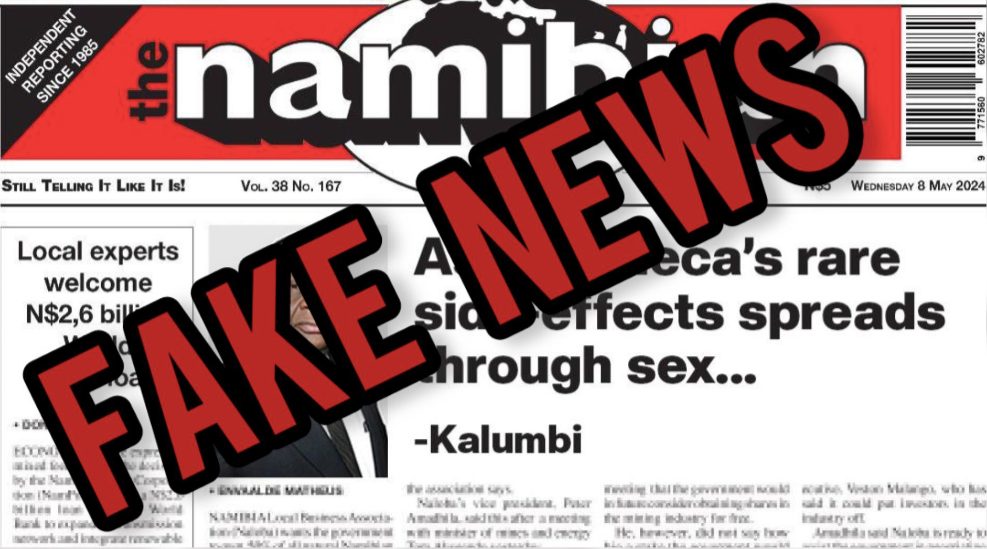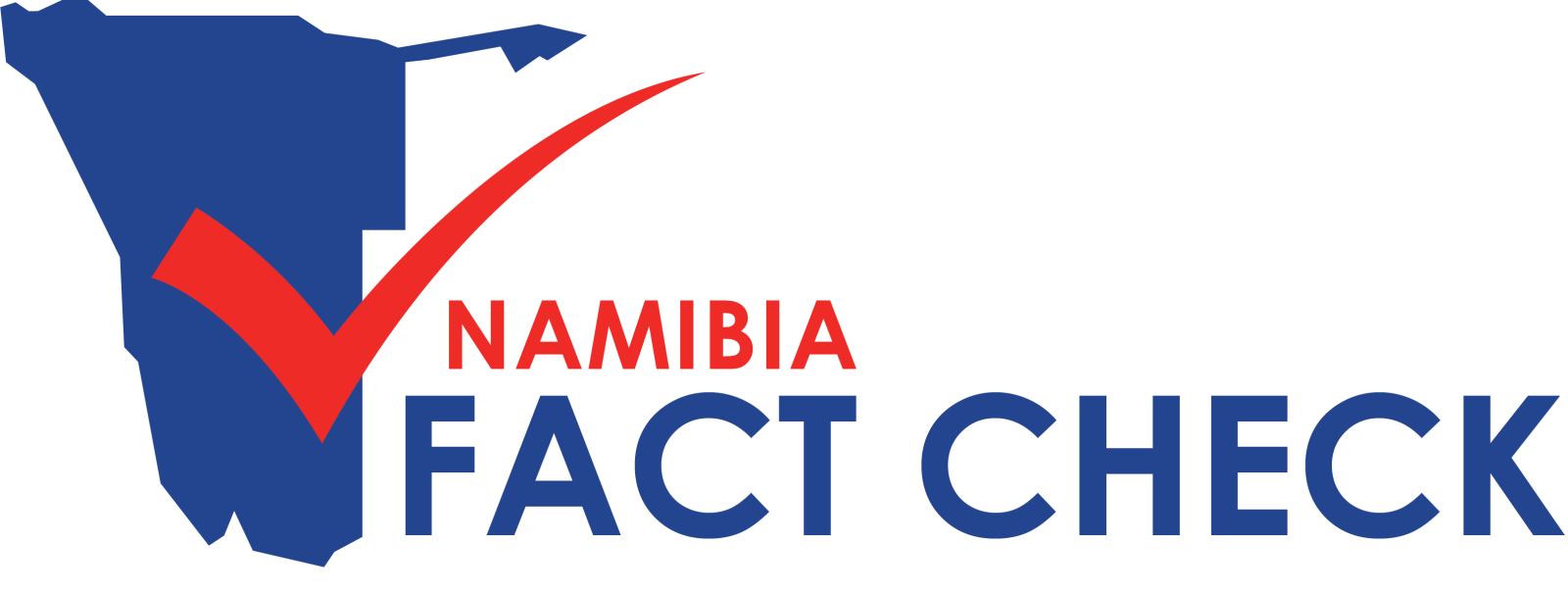IMAGE: Namibia Fact Check
One of the most common tactics of disinformation or propaganda spreaders is to impersonate or mimic trusted journalistic or news entities
To give the appearance of credibility so as to be taken seriously, disinformation and propaganda spreaders often present their content as proper journalism. They attempt to do this by either impersonating a real, prominent news media outlet or by mimicry – presenting themselves as a news media outlet online.

TACTIC: Impersonation
In most instances, impersonation probably takes the crude form of (ab)using the masthead and style elements, such has headline style, of a real news media outlet to try to mislead or deceive.
Online image editing tools make it easy to screenshot and manipulate the posts of a trusted and known news media brand in order to spread disinformation and propaganda.
The Namibian newspaper has become a lighting rod for such tactics over recent times, with its masthead and social media post formats and styles being used to spread all sorts of false information or propaganda online.
Following are recent examples of how The Namibian‘s masthead and image is being used by disinformation and propaganda spreaders:

In May 2024, The Namibian newspaper had to debunk this post that circulated on social media about the side-effects of the AstraZeneca Covid-19 vaccine. This is a screenshot of a fake newspaper frontpage and headline. The newspaper had to debunk the post across its various social media pages and feeds. This was the debunk posted to its X (Twitter) feed on 9 May 2024.

In March 2024, The Namibian newspaper’s template for posting on social media was manipulated to try spread the false claim that independent presidential candidate Ally Angula, who is a devout Christian, was “told by God not to run for presidency”. This debunk of the impersonating post was posted to the newspaper’s Facebook feed on 4 March 2024.
TACTIC: Mimicry
Mimicry takes the form of disinformation or propaganda spreaders presenting as a news media outlet online, whether as a website or just on social media. The aim is to have their pages and posts imitate the look and feel of a credible, reputable news outlet.
In the Namibian context, an example of how this tactic is being deployed is a social media page titled The Windhoek Times, which at first glance gives the appearance of being a credible online news source that is categorised as a “Media & news company” on both Facebook and X (Twitter).

The Windhoek Times page on Facebook was created in August 2022, and has about 1,200 followers, while the last post is dated 24 August 2023.

The Windhoek Times feed on X (Twitter) was created in August 2023, and has only 834 followers as of 17 May 2024.
However, unlike real news outlets that package their posts as summaries of linked-to articles, in order to entice audiences to click on the in-post article links, the posts on The Windhoek Times feeds do not link to a website or actual articles. There is no website or administrator indicated, and no address or contact details listed on either the Facebook or X (Twitter) feeds.
As to the content, posts are clearly slanted in favour of the Independent Patriots for Change (IPC) and its leader, Panduleni Itula, while almost mocking in tone of especially the ruling party and the Namibian government, and dismissive of other opposition political parties. It is evident that The Windhoek Times feeds serve as propaganda outlets for a specific political party and leader, while at the same time engaging in ruling party and opposition-bashing.
How to spot them
When encountering questionable news-type social media content that raises suspicions, do the following:
- Go to the page and view the content to see how it is presented;
- Do they use provocative, emotive headlines and language on / in posts and do you sense bias?;
- Read comments under posts to get a sense of who engages with the content and what perceptions are of the page and content;
- See when the page was created, and how many followers it has;
- See if there is a website listed, and if there is, go to the website and view the content;
- Look for location and contact details of the news entity;
- Look for what other biographical information is available, such as an administrator;
- When in doubt about specific posts, check if credible news outlets or fact checkers have also reported on the same occurrence, topic or issue.
Given that so much mis- and disinformation is spread via social media, especially around election times, it is important for social media users to develop a critical mindset when viewing or engaging with social media content.

